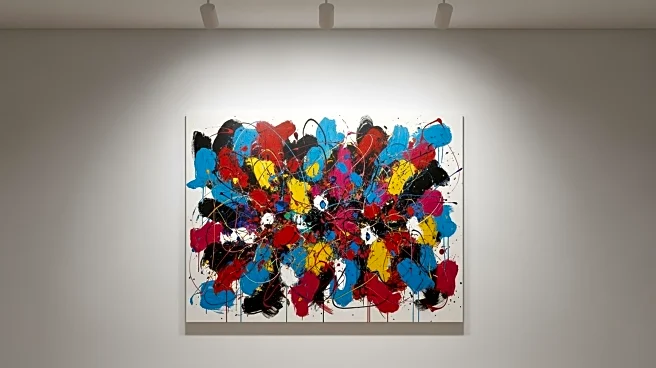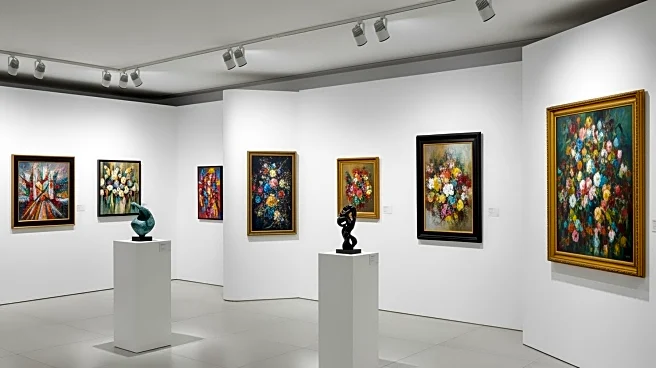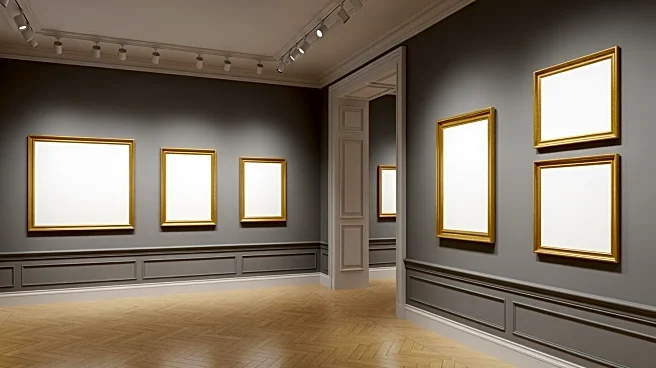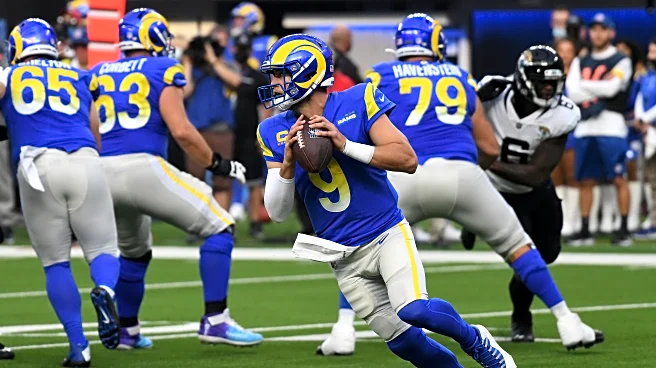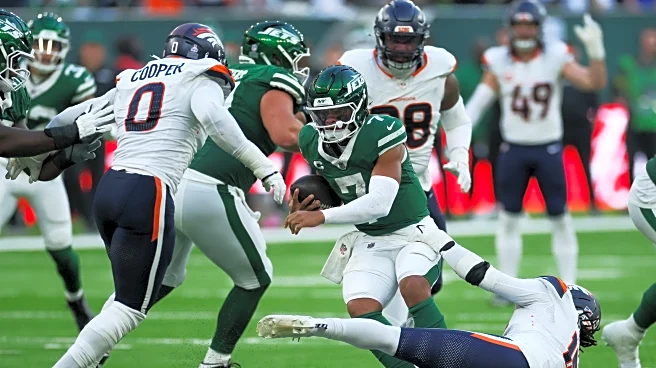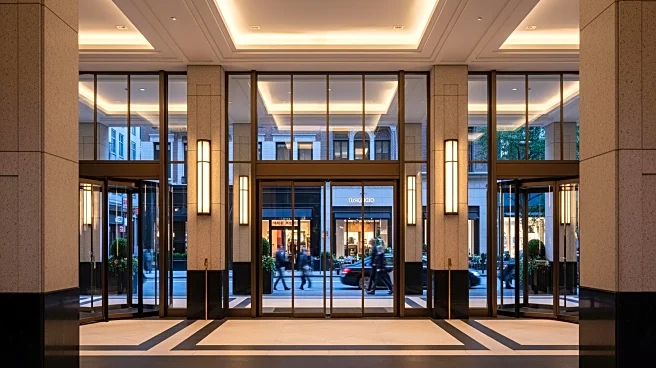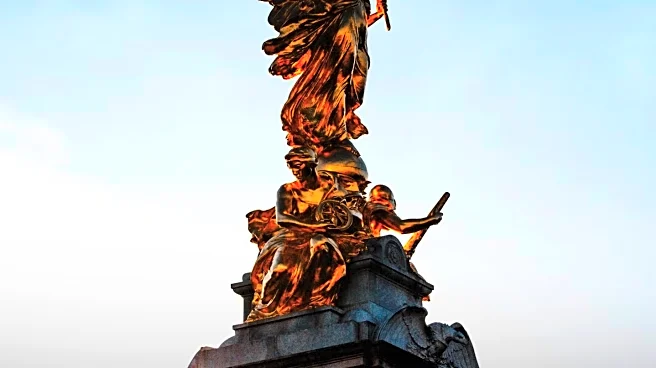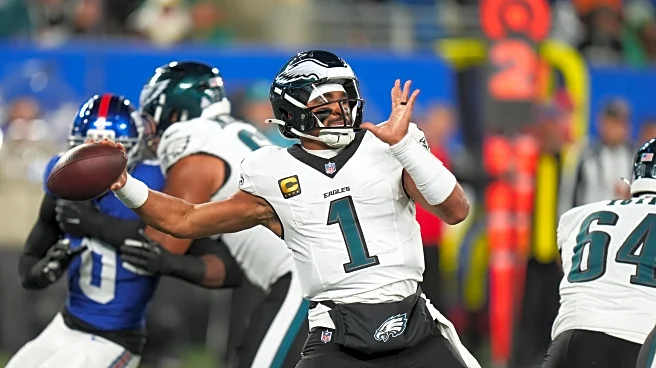What's Happening?
The art market in London is showing signs of recovery during Frieze Week, with a renewed sense of optimism among collectors and gallerists. The event has highlighted the emergence of young galleries and artists,
contributing to a vibrant atmosphere. Patrizia Sandretto Re Rebaudengo, an Italian collector, noted the positive energy in the city, particularly impressed by the Focus section that spotlights young galleries. This section has been strategically placed at the entrance of the tent, drawing attention away from established giants like Hauser & Wirth and Gagosian. The market's previous downturn was attributed to unsustainable price hikes for early- and mid-career artists, leading to a necessary correction. Veteran art dealer Thaddaeus Ropac emphasized the need for hard work in sales, contrasting with past easy sales. Despite challenges, galleries are successfully selling both high-value secondary market pieces and works by emerging artists, indicating a balanced strategy.
Why It's Important?
The recovery of the art market during Frieze Week in London is significant for the global art scene, as it suggests a potential rebound from recent downturns. This optimism could influence upcoming major events like Art Basel Paris and auctions in New York and Miami. The focus on young galleries and artists may lead to a shift in market dynamics, encouraging investment in emerging talent. This could benefit new artists and smaller galleries, providing them with greater visibility and opportunities. Established galleries are adapting by balancing secondary market sales with emerging talent, which may set a precedent for future strategies in the art industry. The renewed interest and sales activity could stimulate economic growth within the art sector, impacting collectors, investors, and cultural institutions worldwide.
What's Next?
As the art market shows signs of recovery, upcoming events such as Art Basel Paris and mega auctions in New York and Miami are expected to further test the market's resilience. Galleries may continue to focus on emerging artists, potentially leading to increased competition and innovation. The success of young galleries during Frieze Week could inspire similar strategies in other major art markets, fostering a global trend towards supporting new talent. Collectors and investors might adjust their strategies, prioritizing emerging artists and galleries. The art world will likely monitor these developments closely, assessing the long-term impact on market stability and growth.
Beyond the Headlines
The emphasis on young galleries and artists during Frieze Week highlights a cultural shift in the art market, where traditional values of ownership are being challenged by newer generations. This could lead to changes in how art is valued and collected, with potential ethical implications regarding the commodification of art. The collaboration and shared spaces among galleries reflect a trend towards community-driven initiatives, which may redefine the art market's structure. These developments could influence cultural policies and funding priorities, encouraging support for innovative and diverse artistic expressions.
